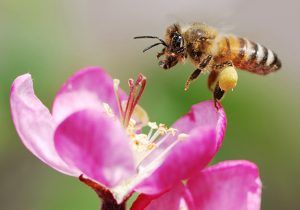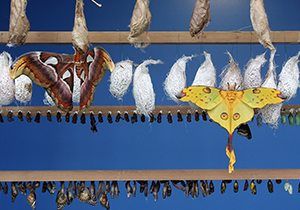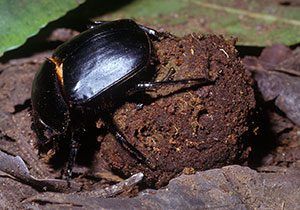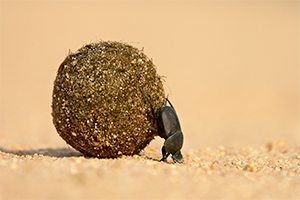Ladybird facts!
Calling all budding young naturalists! It’s time for the lowdown on one of our planet’s most beautiful bugs…check out our cool ladybird facts…
Fast ladybird facts
Scientific name: Coccinellidae septempunctata (seven-pot ladybird)
Family name: Coccinellidae
Classification: Insect
IUCN status: Not Evaluated
Lifespan (in wild): Around one year (two years maximum)
Body length: Up to 1cm
Top speed: 24km/h
Diet: Mostly carnivores
Habitat: Grasslands, forests, cities, suburbs and along rivers.
Range:

There are about 5,000 different species of ladybirds in the world. These much loved critters are also known as lady beetles or ladybugs, and in many cultures they’re considered good luck. They come in many different colours and patterns, but the most familiar in the UK is the seven-spot ladybird, which has a shiny, red-and-black body. Most people like ladybirds because they are pretty, graceful and harmless to humans. But farmers love them because they eat aphids and other plant-eating pests. And boy do they eat – in it’s year-long life, a single seven-spot ladybird can gobble more than 5000 aphids!
Most ladybirds have oval, dome-shaped bodies with six short legs. Depending on the species, they can have spots, stripes or no markings at all. Seven-spotted ladybugs are red (or sometimes orange) with three spots on each side and one in the middle. Their head is black with white patches on either side. The ladybird’s bright colours act as an important defence mechanism, warning animals they’d best not eat them. When threatened, the bugs secrete an oily, yukky, yellow fluid from joints in their legs – and their colouring acts a reminder to any peckish predators who’ve eaten their kind before that they taste disgusting!
These brilliant bugs have another trick to avoid danger, too – remain still and pretend to be dead. Simple, eh? Birds are ladybugs’ main predators, but they also fall victim to frogs, wasps, spiders and dragonflies.
Ladybirds lay their eggs in clusters or rows on the underside of a leaf, usually where aphids have gathered. Larvae, which vary in shape and colour depending on the species, emerge in a few days. Seven-spot ladybird larvae are long, black and spiky-looking with orange or yellow spots – some say they look a bit like small alligators! Larvae grow quickly and shed their skin several times. When they reach full size, they attach to a leaf by their tail, and a ‘pupa’ is formed. In only a week or two later, the pupa becomes an adult ladybug.
Seven-spot ladybirds are native to Europe but were introduced to North America in the mid-1900s to control aphid populations. These incredible insects are happy in many different habitats, including grasslands, forests, cities, suburbs and along rivers. During spring and summer, when they are most active, these incredible insects can be seen fluttering around or walking on the leaves of plants. But when the weather turns colder in autumn, they look for a warm, secluded place to hibernate, such as in rotting logs, under rocks or even inside houses. They like to group together, too, and these hibernating colonies can sometimes contain thousands of ladybirds!
Picture credits – Ladybird on daisy: irin-k, Shutterstock. Ladybird on green grass: Blaz Kure, Dreamstime. Group of ladybirds on tree: Brian Flaigmore, Dreamstime. Red ladybird with black spots on a leaf: Romangorielov, Dreamstime. Black ladybird with orange spots on leaf: Efired, Dreamstime.
More Like Insects

10 facts about honey bees!

The butterfly life cycle!

Dung beetle facts!














LEAVE A COMMENT
THANK YOU
Your comment will be checked and approved shortly.
WELL DONE,
YOUR COMMENT
HAS BEEN ADDED!
COMMENTS
Thank you very much cuz we need to make a fact file
It is good and You maked my do a all about layybird. It is fun and it is so cool.
WOW !
OMG I LOVE LADYBUGS NOW
Cool
Cool
Good website
Amazing Information! Really talks about everything! I love it!
Your facts are amazing! Great information and really talks about it.
I love this it helps me a lot bc I'm doing a info report on lady bugs.
i love it
good information
awesome
Awesome
cool
LOL. Wow.
i love it
Wow
It was helpful
love it
cool
cool love it
cool
awesome
COOL!
cool
amazing facts
good job on website
sweet
I LOVE LADYBIRDS!!!!!!!! I THINK THEY ARE AWESOME AND COOL!!!!
cool!
I learnt more about ladybugs
awesome!
i am doing a presantation on ladybugs
So cool, very helpful for assignment
I love ladybirds and that's a lot of facts for just ladybirds
I never new lady birds ate meat
I didn't no that a ladybug is mostly a Carnivores.
i did not no that they have such a long name
That's a long name for a Ladybird.
Great
In New Zealand Ladybugs Are Shiny Blue!
HOW MANY ladybugs are there
love ladybirds, so cute! but so weird.... xx Aria
Love ladybirds so much that i could have one as a pet so badly . It just makes my mind more work.
cool ladybugs
Now I learned a lot about ladybugs
Yay I love this page because I really like ladybugs and this website is great!
Ladybugs are cute <3
This is so amazing this website!!!! Thank you for telling me so much about these animals!!!!
CUSTOMIZE YOUR AVATAR